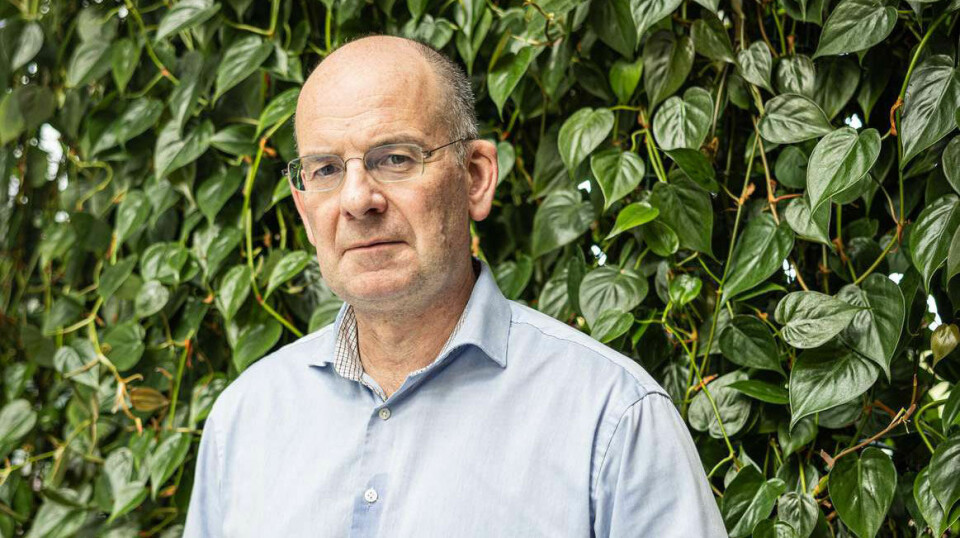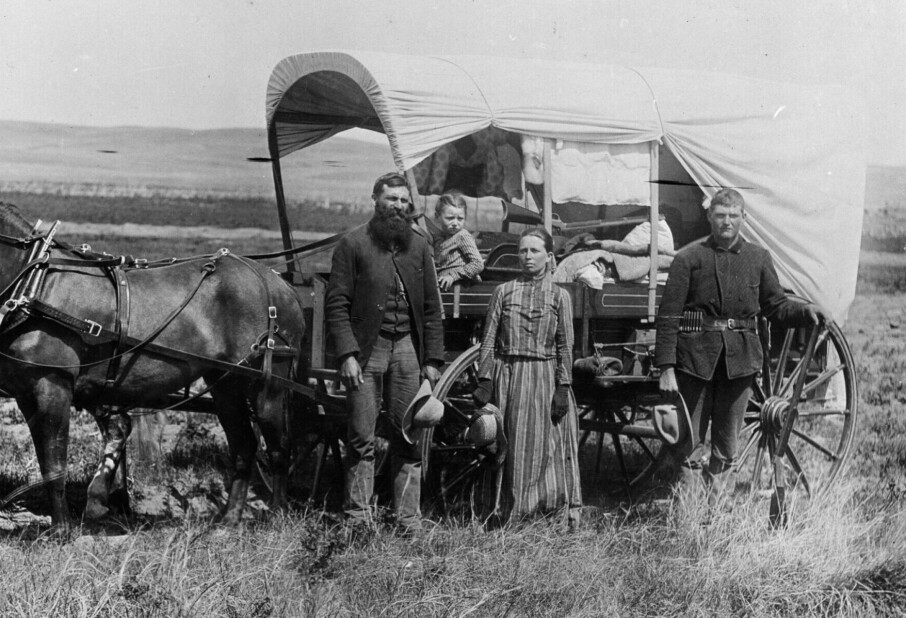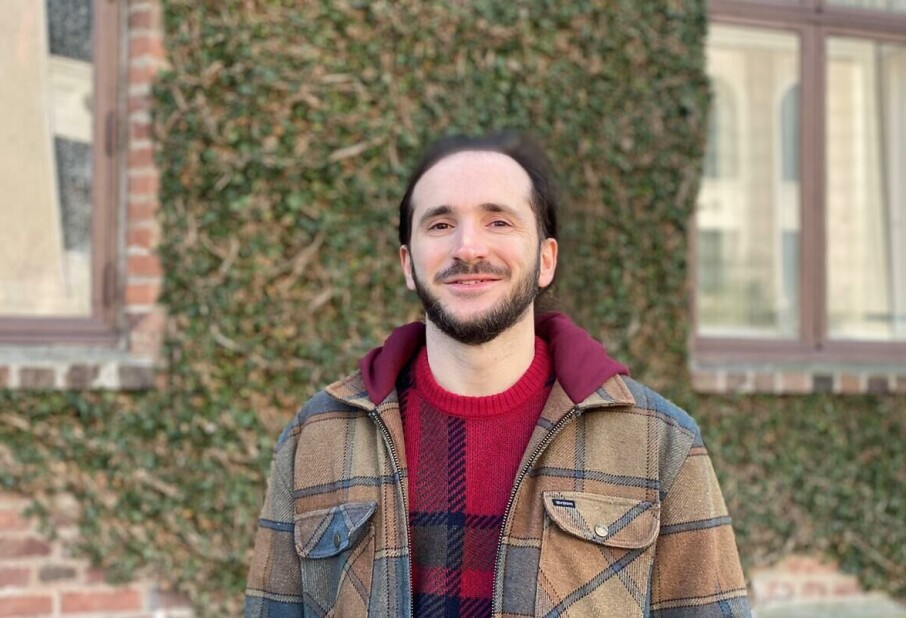THIS CONTENT IS BROUGHT TO YOU BY THE University of Agder - read more
"People will vote for any party nowadays"
History professor Knut Dørum thinks Norwegian politics has become muddled. There are too many parties and it's difficult to know who to vote for.

“I don't think young people today have as clear an understanding of the red and blue political blocs as my generation did," says Knut Dørum.
He is a history professor at the University of Agder.
"This is because young people read fewer newspapers and books than before, but also because it's not necessarily crystal clear who fits into which side in politics,” he says.
Red-green and blue blocs
He reminds us that these blocs used to be called the socialist and bourgeois blocs. Today, they are commonly referred to as red-green and blue, or red-green and bourgeois.
“Several centre parties have also switched from one bloc to the other over the years, or they have considered changing sides,” Dørum says.
He mentions the Centre Party (SP), which was loyal to the bourgeois bloc until it joined the red-green government in 2005.
Another example is the Christian Democratic Party (KrF). KrF has discussed whether it is actually a red party, but has settled on the blue side.
“This is also true for the Green Party (MDG). The party has shifted from a neutral centre position to supporting the Labour Party (Ap) and the red-green side,” he says.
But MDG and Ap have little in common, according to Dørum. The same goes for the Liberal Party (Venstre) and the Progress Party (FrP) on the blue side.
“The parties are on the same side, but have very different policies. It's not easy for voters to know what kind of policies they will get from such blocs,” he says.
The voters have changed
But according to Dørum, voters have also changed.
“In the past, we were loyal to one party and voted for that party in every election. But now there are so many parties that we don't know whom to vote for and we're not loyal to any. Nowadays we'll vote for any party,” he says.
From 1884 onwards, it was more common to vote for the same party for life. After World War II in 1945, loyalty to one party almost became the norm. Dørum has written about this in his book.
The party was part of people's identity
Loyalty remained until the 1970s.
“Norway used to be a more pronounced class society. Back then, people identified more strongly with their class and the party they voted for. Workers voted for Labour. Office workers and businesspeople voted for the Conservatives. And farmers voted for the Centre Party,” he says.
People were also more bound by tradition and authority before, he says.
“We listened to our father and mother and priest and teacher. And in the first decades after the war, we sought security more than freedom," he says.
But something was brewing.
In the 1960s, young people turned their backs on all kinds of authorities, but the majority were fairly apolitical. Rock 'n' roll as a form of youth rebellion was more important than the fight against the Vietnam War.
Freedom becomes more important than security
“As the 60s progressed, we were materially provided for and tired of being told what to think and choose. Now we sought freedom,” Dørum says.
In his book Arven etter 1968 (The legacy of 1968), he describes Kåre Willoch from the Conservative Party as a freedom-seeking '68er.
“Like those on the left, the right were also '68ers. Willoch rebelled against authorities such as bureaucracy and telephone and TV monopolies. We're talking about young people who were tired of being controlled by the previous generation,” Dørum says.
Willoch later became prime minister and was known for intense TV debates against Norway's first female prime minister, Gro Harlem Brundtland from the Labour Party.
Neoliberal ideas challenge social democracy
“The most important thing in the early 1970s was that young people wanted more influence and challenged authorities such as the state, capital, industry, and superpowers,” the historian says.
According to Dørum, the Labour Party became more and more of an old-man's party in the years from 1960 to 1980, before Gro Harlem Brundtland renewed the party towards the end of the 1980s. At the same time, the Conservative Party fought bureaucracy and regulations that limited individual freedom.
The Conservative Party succeeded and has – depending on which bloc you support – either been credited or blamed for introducing neoliberalism in this country.
“The right-wing wave and neoliberalism in the 1980s challenged the social democratic welfare state as it was designed by Labour, with its emphasis on security, solidarity, and equal opportunities for all. Neoliberal ideas essentially involved freeing oneself from state control and regulations that limited individual freedom,” he says.
According to Dørum, the Labour Party eventually adopted parts of the Conservative Party's policies – policies that history books alternately call deregulation, less state control, and neoliberalism.
“Neoliberalism didn't destroy the welfare state. Social democracy survived and care for older adults and the sick improved greatly. Solidarity didn't disappear, but rules and regulations decreased, and individual freedom increased,” he says.
Smaller parties promise more than they can deliver
Dørum says that the rise of smaller parties through the 1990s has made it even harder to decide who to vote for.
“The smaller parties tend to be populist and promise a lot more than they can deliver. Speaking in caps and exaggerating which promises can be fulfilled is the very definition of populism,” he says.
“Which parties are those?”
“The Progress Party, the Socialist Left Party, the Centre Party, the Red Party, the Green Party, and lately also the Christian Democratic Party,” he says
References:
Dørum et al. 'Arven etter 1968' (The legacy of 1968), Cappelen Damm Akademisk, 2021.
Dørum, K. 'Demokrati og medborgerskap – fra 1814 til i dag' (Democracy and citizenship – from 1814 to today), Cappelen Damm Akademisk, 2024.
———
Read the Norwegian version of this article on forskning.no

This content is paid for and presented by the University of Agder
This content is created by the University of Agder's communication staff, who use this platform to communicate science and share results from research with the public. The University of Agder is one of more than 80 owners of ScienceNorway.no. Read more here.
More content from the University of Agder:
-
This can make life easier for new maths teachers
-
Norwegian women were burned at the stake here
-
Ticks can spread more than just Lyme disease and TBE virus
-
Fish help the ocean store carbon
-
New study: Early interventions against childhood obesity show no effect
-
Researchers call for better protection of Europe's last flat oysters




































